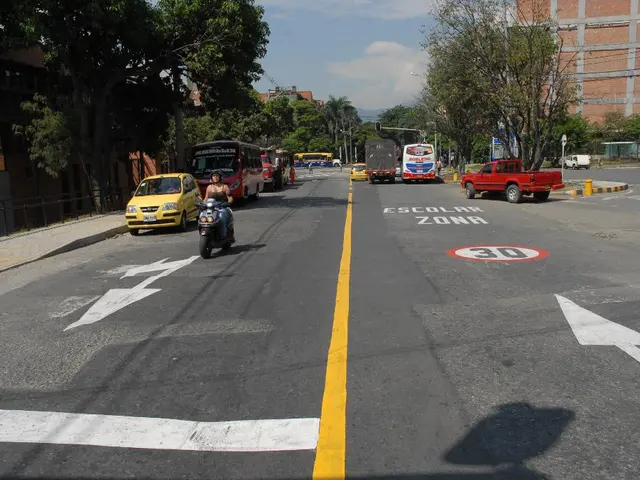German Volkswagen leader heralds cost-saving agreement, yet shares experience a decline
Volkswagen Averts Plant Closures and Compulsory Redundancies in Germany
Volkswagen has made a significant turnaround in its cost-saving measures, with the automaker announcing it will not proceed with plans to close plants in Germany and will avoid compulsory redundancies, following a deal with unions [1]. This agreement comes as a relief to workers and unions, who had threatened industrial action over the potential factory closures and heavy job cuts.
The deal marks a significant step in Volkswagen's strategic overhaul, aimed at reducing costs and adapting to weaker demand in key markets. The company had initially planned to shut at least three factories in Germany, lay off tens of thousands of employees, and permanently downsize its remaining plants there [2]. This move was prompted by pressure on Volkswagen to remain competitive amid challenges such as weaker demand from China and Europe, rising U.S. tariffs, and transition costs to electric vehicles [1][2].
The job cuts will primarily affect the Volkswagen brand, which has been at the centre of the company's crisis due to high manufacturing costs and low profits [4]. Volkswagen's CEO, Oliver Blume, described the agreement as good news for the company [5].
The agreement aims to reduce overcapacity at Volkswagen's German plants, enabling continued competitive manufacturing in Germany. The reduction in production capacity will amount to approximately 730,000 vehicles per year, equivalent to the production volume of two to three large plants [6].
The crisis at Volkswagen began in September with the announcement of potential factory closures and heavy job cuts in Germany [7]. Union IG Metall had threatened to launch the biggest wave of industrial action seen in Germany for decades unless VW walked back its most extreme plans [8]. Two mass strikes occurred in response to the potential factory closures and job cuts.
Blume called for improvements in domestic conditions, including lower taxes, fewer bureaucratic hurdles, and more affordable energy, to support Volkswagen's efforts to remain competitive [9]. The 10-brand automaker Volkswagen includes Seat, Skoda, Porsche, and Audi [10]. Despite these cost-saving plans, Volkswagen has faced profit declines and trimming of its 2025 operating margin outlook, emphasizing the financial impact of tariffs and restructuring expenses on the company [1].
Volkswagen's shares dropped more than three percent in afternoon trade in Frankfurt following the deal announcement [5]. The company has also announced plans to launch new lower-cost electric vehicle models produced outside Germany (e.g., in Spanish plants) to unlock synergies and improve cost efficiency [3]. However, no new information about the reduction in production capacity or the number of job cuts was provided in this paragraph. Similarly, no new information about the company's plans to save four billion euros a year was provided.
In summary, Volkswagen's cost-saving efforts in Germany have resulted in a significant turnaround, with the automaker abandoning plans for factory closures and compulsory redundancies. The agreement aims to reduce overcapacity at Volkswagen's German plants, enabling continued competitive manufacturing in Germany. This move reflects the company's commitment to adapting to the challenges it faces in the global automotive market.
The agreement between Volkswagen and unions signifies a crucial step in the company's strategic overhaul, which involves significant cost reductions and adapting to weaker demand in key markets, thereby encompassing the whole field of business. This financial restructuring is aimed at ensuring the company's competitiveness in theglobal industry, particularly amid challenges such as weak demand from China and Europe, rising US tariffs, and transition costs to electric vehicles.








